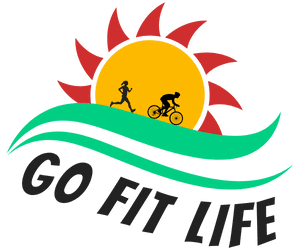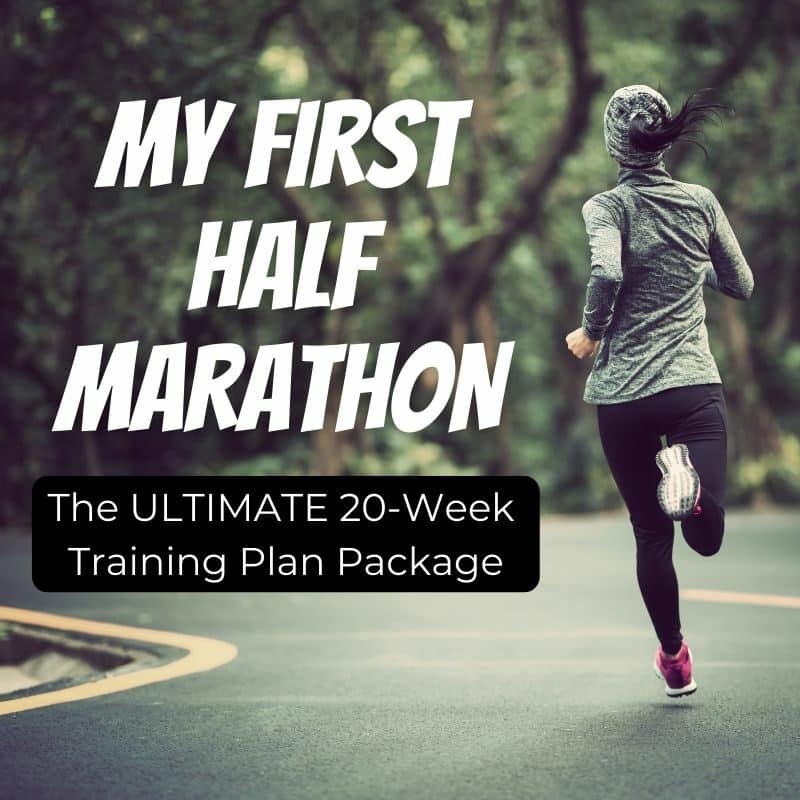
Structural Tolerance and Progressive Overload Are Important for New Runners
Structural tolerance and progressive overload are two important training principles to help new runners run better. Today, I want to discuss why beginner runners should use these to start off on the right foot.
Spring has sprung, and summer is just around the corner. Many people are getting out to run for the first time or after taking a long time off. Some might even consider doing a local running event for the first time.
Many new runners do not bother using a training plan. They just wing it. Or they join a local club and try to keep up with runners that run often. As a running coach, I am not fond of this starting approach.
WHY BEGINNER RUNNERS SHOULD FOLLOW A RUNNING PLAN
People often look to other experienced runners to get ideas of how to start running. However, what those experienced runners do is NOT what a new runner should do.
Many new runners struggle with things like breathing, feeling slow, the onset of early fatigue during their run, or chronic fatigue and soreness from doing too much too soon. In the worst cases, they burn out early or get injured.
More often than not, runners do not train consistently and run based on weather, emotions or whenever their schedule permits. To top it off, they go too fast and far too soon.
This is especially true for the new runner who cares too much about what other people think. I always ask these runners: who are you running for – yourself or them?
Following a training plan that provides a smart training strategy, whether you are doing it for general fitness or an event, is hands down the best way to run better. A smart training plan will be designed with two key training principles: structural tolerance and progressive overload.
THE PROBLEM WITH SOME BEGINNER TRAINING PLANS
There are many free beginner running plans online, but some fail to start the new runner off on the right foot.
Most beginner running plans that I have reviewed start with too much running load creating a lot of tension in the muscles, joints and on the cardiorespiratory system.
For example, some start the runner with five minutes of running and then walk for one minute. Do you know how long running for five minutes feels for a new runner? And then they have to repeat this several times more in their first workout.
For some people, five minutes might be okay. This depends on the previous fitness experience and current fitness level of that person. If you are a new runner without any general fitness established, starting out with five-minute running intervals is not what I recommend. A one-minute rest interval after five minutes of running is not enough time for the newbie to recover. The running intervals will get slower and more difficult to complete.
For every step a runner takes, there is a lot of force rippling through their body…every joint… ankles, knees, hips, spine, and shoulders… are being impacted. Not to mention the heart and lungs, which for new runners, are not conditioned yet. Think about that!
The amount of force is different for everyone. Here is a quick calculation: take your body weight in pounds and x that by five. For a 150-pound person, that could be 750 pounds of force rippling upward through the body from each running step (depending on factors such as gait, speed, form and so on).
How many steps do you take when you run for five minutes compared to 10 or 20 seconds? Yea, exactly!
For most beginners, five minutes of running is too much to start. Those who do not have a strong fitness background and are not strength training most likely will struggle. And some people might be dealing with joint pain or want to keep previous injuries from rearing their ugly heads.
There is so much to consider. A gentler approach to start running is a smart approach for most.
WHAT IS STRUCTURAL TOLERANCE FOR RUNNERS?
Structural tolerance is the measure of tolerance your bodily tissues (bones, muscles, joints, heart, lunges, etc.) can hold up against a force. Read this fantastic article on Tissue Adaptation for Runners by Carrie McCusker to learn more.
If you are not consistently fitness’ing your structural tolerance will be lower than someone who is fitness’ing regularly. This is why new runners should not use a running plan designed for someone running consistently. They need a plan designed for beginners to guide them properly as they build a running-specific foundation.
And if you are an older adult that is not active, your bones, joints, and muscles are getting weaker as you age. This will make you more susceptible to injury.
But you can change this and increase your structural tolerance starting immediately. To better prepare you for running, I suggest walking three times per week and strength training twice per week for two to three weeks. Build a foundation first.
Structural tolerance needs to be built progressively because if you overload your tissues too much too soon, your risk of injury can skyrocket. It is better to take a gentle start and build up from there than to go full gas and risk getting injured.

WHY INJURIES ARE COMMON IN RUNNERS
The number one reason injuries are common in runners is that they run too much, too soon, too often!
And the thing about doing too much, too soon, too often – an injury might not happen in the first run or the second or even the third. As you pound away at your body and repeatedly overload too much, you weaken the tissues and deprive them on the time they need to repair. They will become more susceptible to injury.
Then it just takes that one moment during a run to create a slight tear in a weakened tissue that cannot tolerate that load. If the damage happens so slightly, you may not feel it. And so you go out and pound again… and again… and again. Then three months down the road, BOOM, you are most definitely feeling it and now have an injury.
Repetitive stress injuries are common in runners and happen mostly from applying too much load too soon, and too frequently.
Even the most experienced runners who take any substantial amount of time off start back up at about 10 – 15 minutes of very low-intensity running. Then they progress a bit more during each subsequent session. But they never start back up where they previously left off because they know better.
WHAT IS PROGRESSIVE OVERLOAD FOR RUNNERS?
Progressive overload is a fundamental training principle that has been around forever. Basically, this is the fine art of gradually increasing load over a period of time. This is done to progress in fitness and sports. We do it in running when we train for personal goals, such as running 5k. The Marathon Handbook has written an easy-to-read article explaining the principle in more detail.
It can look like this: In the first session, a new runner with no prior running experience or fitness level could walk for five minutes and then run for 10 seconds. They can repeat this process over one kilometre. In the same week, they can do two more sessions like this.
Then the following week, they can do the same distance and same walk time, but they may increase the run time from 10 seconds to 20 seconds.
Then the third week, they can do three walk-runs with the same distance and walk time but increase the run to 30 seconds.
There is no one set way of practicing progressive overload, but there are a few basic guidelines. For beginner runners, the rule of thumb is to use an increase in load by a small percentage in running time. In the example above, I increased the running time by 10 seconds in each run. However, you could also keep the run duration to 10 seconds and decrease walking time.
Do not change too many variables at once. For example, it would not be wise to increase distance, decrease walking time and increase running time all at once. By doing all this at once, the load would be too much.
Now do you see why it is so important to follow a training plan? They are not just for serious and well-experienced runners. They are for EVERYONE!
Training plans are the secret sauce to building better fitness in smarter ways that can be sustained for life. They help you avoid burnout and injuries.
Besides, they give you structure for your training sessions and objectives to meet along the way. Following a running plan will help you build better running fitness and teach you how to train smarter.
WALK-RUN 5K BEGINNER TRAINING PLAN
I use structural tolerance and progressive overload in all my programs and training plans. My coaching philosophies support injury prevention and pain-free fitness. There is no requirement to be in pain or that you have to train through pain to get fit. With pain, no gain!
l designed a free beginner walk-run 5k training plan that is fail-proof. In my experience, there is a lack of training plans that take a gentler approach to help a new runner start running.
My free plan is designed for people that have no prior running experience. It caters to people with lower fitness levels and adults of a mature age or older. The main objective is to help the new runner complete 5k injury-free, without burnout, and with the energy left over to continue running.
If you are a new runner looking for a gentle start, try my free 8-week training plan. It is designed to help you eventually do a walk-run equal ratio of one minute walking and one minute running over 5k.
This means the newbie will spend as much time running as walking. However, because running covers more distance than walking over one minute, the new runner will cover more ground running within the 5k. This is confidence boosting.
Get the free training plan here.
You can also read more of my blogs on running here.
If you have questions or comments or want to share your new running experience, please post them in the comments below. Hope to hear from you.
Happy running!
RUNNING A HALF FOR THE FIRST TIME?
Check out the ultimate half-marathon beginner training package below. 20-week plan including everything but the kitchen sink.








Responses